Mount Madonna has over a hundred campsites and the ruins of a mansion built by a guy who owned nearly 2 million acres of California ranch land. It has 20 miles of trails but they’re not the main attraction. I hiked there a couple years ago and rated it merely so-so.
Yesterday I went back and could hardly believe it was the same park. It was, but this time I was walking on better trails. Which goes to show there’s always time in life for a new first impression.
Before, I hiked out of the campgrounds and stayed on the old mining and ranching roads through the park. This time I hiked into the park from the Sprig Lake Recreation Area about five miles from Gilroy on Highway 152. It has two things I like: free parking and uphill hiking at the beginning. It also had something unexpected: the Sprig Lake Trail, which marches up the hillside for a couple miles, starting out in oak woodlands and moving into thick redwood forest. It’s pretty steep, but it’s positively gorgeous. Every time I think “well, I’ve seen all the great trails around here,” I come across another like this one.
After I’d done the wake-up-the-heart-and-lungs trek up the hill, the distinctive wail of the homo erectus rug-ratus revealed campgrounds nearby. From there, Sprig Lake Trail connected to a network of trails, most of them easy and redwood-shaded, around the Henry Miller Site (Miller’s the aforementioned land baron). Old logging roads took me back down the hill to the Sprig Lake trail head.
OK, let’s check out some pictures:
A sunny day makes it pointless to imagine bringing any good pictures home from sections of trail like this — the beginning of the Sprig Lake Trail. But pictures will never capture the sensation of hiking a really nice trail like this one anyway, so maybe it’s just as well.
If you do take the Sprig Lake Trail, check out the half-mile out-and-back spur to Twin Giants, two of only four old-growth redwoods remaining in the park. A bicentennial plaque placed by the trees in 1976 says they’re certified to have been alive in the time of the American Revolution. Actually they were probably there before Columbus made landfall in this hemisphere.
A bunch of scraggly trees on the Sprig Lake Trail near the Twin Giants spur. Trails here continually enter and exit distinct forest ecosystems. Botanists must wet themselves when they come here.
You know how the rich robber barons of another era stuck together? Well, here’s one of their gifts: A white fallow deer, direct descendant of a pair of deer William Randolph Hearst gave to the descendants of Henry Miller in 1932 (he couldn’t have given them to Miller himself, as many accounts state, because Miller died n 1916). The deer live in a pen to keep them from becoming an invasive species.
Miller must’ve been important: there’s ruins where he used to live, just like the Romans.
Broken concrete stairs that presumably used to lead up to the mansion on the grounds here. Those concrete posts in the background appear to be the footings.
Redwoods abound in the trails near the Miller site.
Another excellent dangling buckeye pod.
I’m definitely glad I gave Mount Madonna another look. It’s tempting to write it off as someplace to take the kids camping, but the trails’ charms stand on their own.

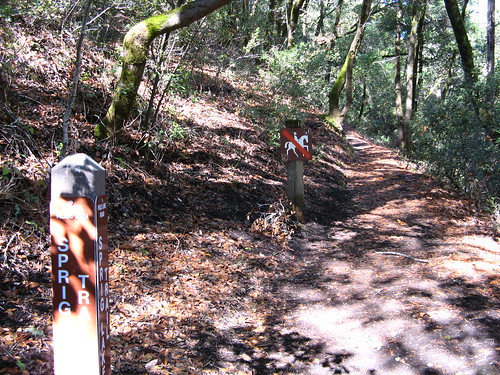
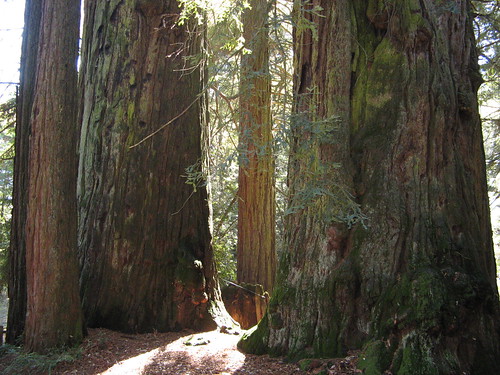
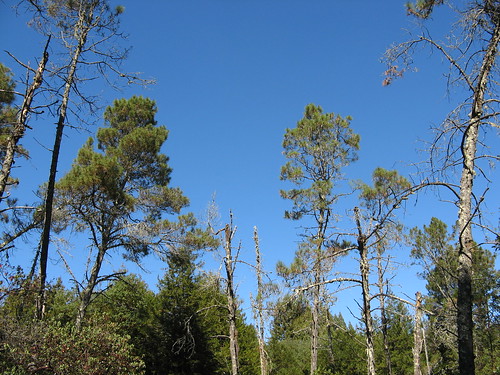

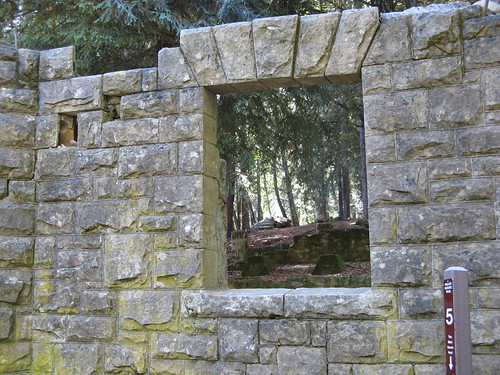
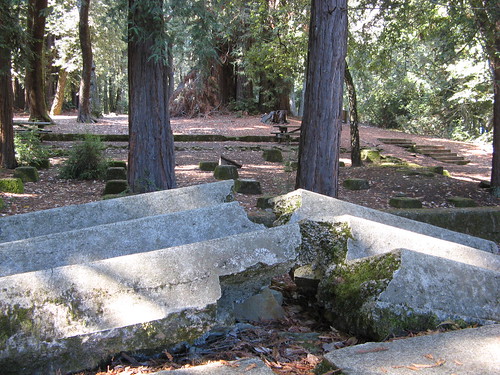
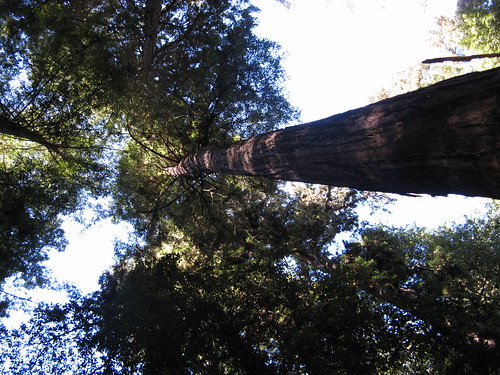
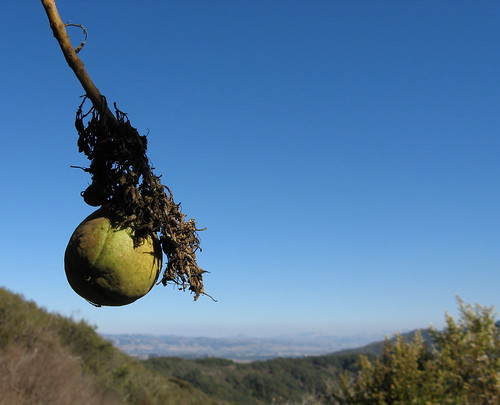
Good ‘un, matey!
I am pretty sure that this was the same Henry Miller who founded the town of Gustine.
http://www.gustinehistoricalsociety.org/Gustinehistory.html#Hmiller
Tom, did you see evidence of feral pigs damage? They run rampant in the park, or at least they used to. Maybe they eradicated them by now. About five years ago I was hiking some trail from the retreat center area and not far in saw huge “roto-tilled” areas, and then encountered a huge troop of the savage porcines, with about ten little (and very cute, I must admit!) sucklings in tow. Anyone else encounter them? I have on several occasions at Henry Coe St. Park. Once, mountain biking deep in, I came upon a steel cage with a poor angry desperate sow trapped. A contractor killer was due out in a few hours, a park ranger later explained to me. I haven’t seen wild pigs any where else, so I’m wondering if the problematic species has been eradicated or at least dislocated.
No pig damage sightings this time.
But I did spend most of my time in the redwoods … I don’t think the pigs hang out as much in that biome.
There is a big, grassy open area along a trail called the Merry Go Round that probably was prone to pig damage, but I hiked only a mile or so of it and didn’t notice any.
Tom,
The crumbling mansion, fallow deer, weird history make that hike. I’ll put it on my list next time I come down.